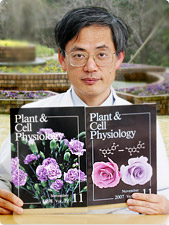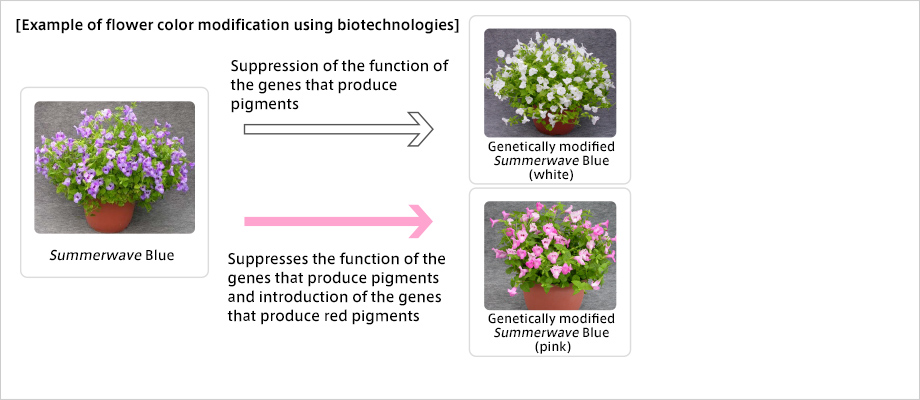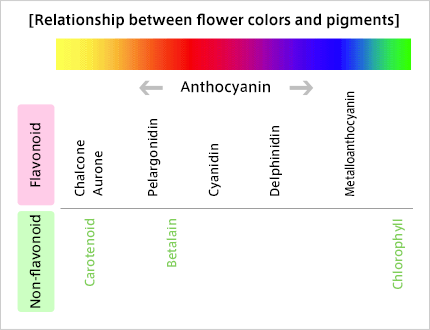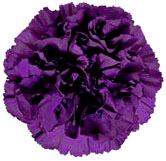- Suntory Global Innovation Center
- > Research & Technology
- > First in the world! Challenge for "blue roses"
- > Flower colors can be changed as you wish
Research & Technology

Flower colors can be changed as you wish
Plant breeding
Plants that are currently grown, such as cereals, vegetables, and flowers, were created as a result of long-term plant breeding by "hybridization." Thanks to improvements in breeding, our living level has increased because we have produced crops that are handled easily by humans, such as disease-resistant crops, crops with high yields, and crops beautiful to look at. However, hybridization requires long time and labor intensive work, and there were some characteristics that could not be achieved by hybridization. Therefore, it was critical to develop new breeding methods to generate novel varieties. Using biotechnologies that are currently progressing remarkably, breeding efficiency has considerably improved, and what was once impossible by hybridization has now become possible. Suntory applies these technologies to generate novel flowers, and has been making various kinds of endeavors, such as the endeavor to develop "blue roses," which was a dream of rose breeders around the world.


- References
- Plant Biotechnology (2006) 23:13-18
- References
- Plant Biotechnology (2010) 27:375-383
*Summerwave Blue has been released by Suntory Flowers Limited.
Mechanisms by which flower colors are determined
Plants contrive various ways to attract insects and birds that carry their pollens. The use of flower colors is one of these ways, and they have flowers of various colors that appeal to insects and birds. Representative flower color components include: 1) flavonoids, which produce many colors from yellow to blue (morning glory, carnation, geranium, etc.), 2) carotenoids, from yellow to orange (yellow chrysanthemum and rose, components of tomato and carrot, etc.), and 3) betalains, contained in some plants (four-o'clock, cactus, etc.) and mushrooms (see the figure below). Among them, Suntory has been conducting studies of flavonoids. Flavonoids include many compounds that are good for health. Anthocyanins in blueberries, which are considered to be good for eyes (red and blue pigments among flavonoids are called anthocyanins), and catechin belongs to the class of flavonoids.
Flavonoids are synthesized from phenylalanine (a kind of amino acid) with the work of many enzymes. Flower colors are determined depending on which enzymes work and how much they work. For example, if enzymes to produce blue pigments work, blue flowers bloom, and if enzymes to produce red pigments work, red flowers bloom.


The enzymatic activity is controlled by genes (the blueprint of living organisms). Thus, flower colors can be changed by controlling genes.
Roses and carnations don't have enzymes or genes to produce blue pigments. Suntory acquired these genes for the first time in the world. By introducing these genes into carnations, we created carnations in which blue pigments were accumulated called "Moonseries" (the photo: Moonseries Velvet Blue). These carnations are sold in Japan, Europe, and the USA. Similarly, we developed roses in which blue pigments were accumulated.
* The department name, title, and photo are as of the time of the production (interview).
* The department name, title, and photo are as of the time of the production (interview).
